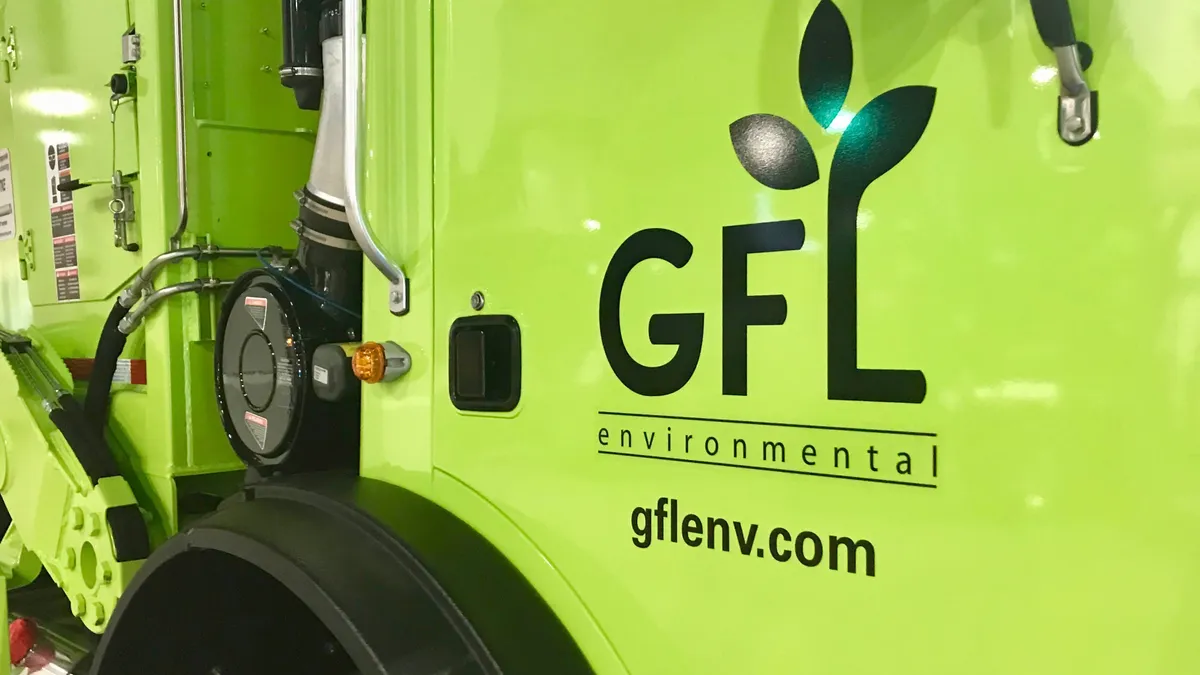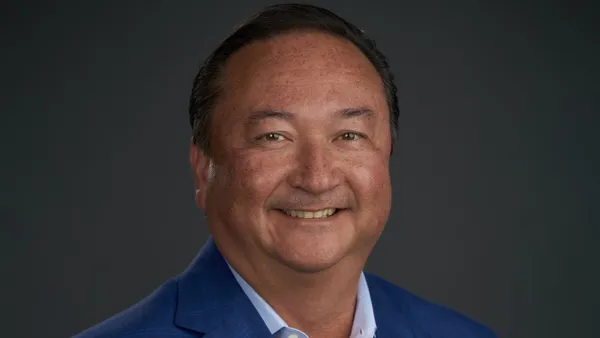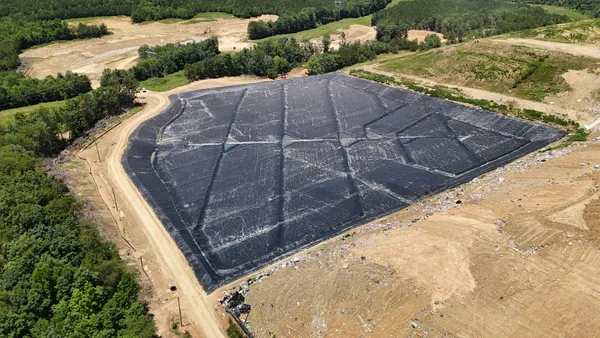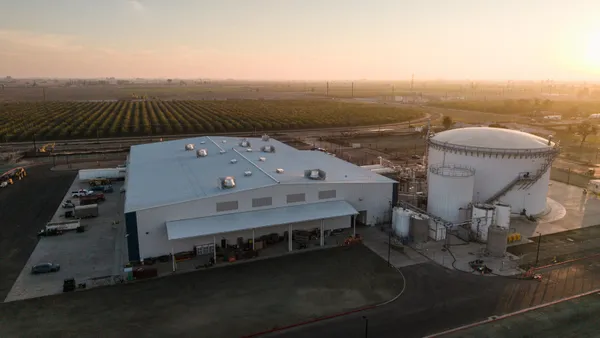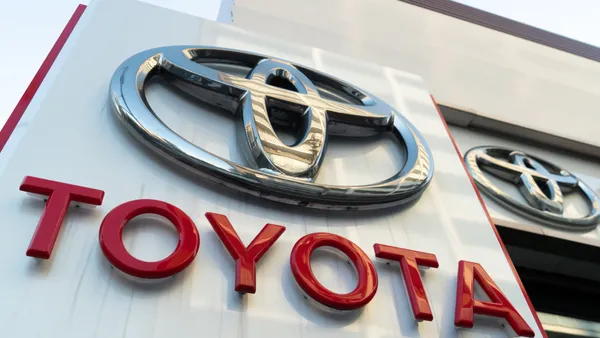All financial information is in Canadian dollars.
- Financial picture: GFL Environmental CEO Patrick Dovigi said the company closed out the year with strong organic revenue growth, increasing full-year adjusted earnings before income, taxes, amortization and depreciation by 16.4% compared to 2022, including divestitures. The company worked to refinance its debt to bring its leverage ratio down, but expects to continue to have cash in hand to invest in sustainability-related projects and tuck-in acquisitions, Dovigi said on the company’s earnings call Wednesday.
- Solid waste: GFL closed 2023 at a record pricing level that fueled a significant expansion in the solid waste segment’s profit margin. Executives attributed this to the company’s pricing strategy and intentional management of volume. GFL’s solid waste volume declined 3.6% in Q4, in part due to intentional shedding and some softness in special waste services, CFO Luke Pelosi said. Executives expect shedding to continue this year in areas like Southeast Michigan, due in part to GFL’s active acquisition pipeline — as the company tucks in new haulers, it also identifies new low-return contracts it can drop.
- M&A: Dovigi teased another active year for M&A spending including a “medium-sized” company in the Southeast U.S. that he expects to close in the second quarter. He described it as a family-owned, vertically-integrated company with immediate accretive potential in markets where GFL is active. That acquisition will be responsible for roughly half of GFL’s total M&A spend in 2024, which it expects will total $600 million to $655 million. In 2023, the company spent nearly $900 million on 39 acquisitions.
- Leverage path: Executives don’t anticipate the pipeline will have a measurable impact on debt. The company is still targeting an investment-grade credit rating in the medium term. To get there, it must reach and maintain a leverage ratio of roughly 3.5x. GFL ended the year with net leverage at 4.14x compared to 5.02x at the end of 2022. It projects ending 2024 with leverage between 3.65x to 3.85x, achieved in part through increasing cash flow from its sustainability investments like renewable natural gas projects and MRFs.
- RNG: GFL expects to begin receiving earnings from its Arbor Hills RNG facility in Michigan in the first quarter of 2024. Though the facility will remain the company’s largest, GFL expects two to three more facilities to be built in the near term, contributing up to $80 million of adjusted EBITDA once fully operational. That’s roughly equal or slightly larger than Arbor Hills’ contribution, bringing GFL within striking distance of its goal of $175 million of annual adjusted EBITDA from RNG by 2026. In 2024, roughly a third of the $250 million to $300 million GFL expects to spend on sustainability-related capital expenditures will go toward those RNG projects.
- EPR: The majority of GFL’s sustainability spending will go toward MRFs and other investments to pursue EPR-related contracts in Canada. GFL expects to begin generating earnings from the business by the end of 2024, and by 2026 estimates current EPR contracts could bring in an adjusted EBITDA of $80 million to $100 million. Dovigi said the opportunity in EPR is “significantly larger” than the contracts GFL already has secured, and he is optimistic the company will win additional contracts.
- Workforce: GFL continues to see labor turnover fall, reaching a rate in the “low 20s” by the end of 2023, Dovigi said. He noted that was “materially down” from the peak of turnover over the last few years, which was about 30%, but the company is targeting a rate in the “high teens.” GFL also reported a total recordable incident rate of 3.2 by the end of 2022 in its most recent sustainability report, and Dovigi reaffirmed the company’s goal of reaching 2.0 on the call.
- 2024 guidance: GFL expects to reach $8 billion in revenue in 2024, compared to more than $7.5 billion in 2023. That factors in expected solid waste pricing of 6% or more, net M&A rollover, organic growth in environmental services and a slight positive impact from commodity pricing. It projects adjusted EBITDA of $2.215 billion with an adjusted free cash flow of about $800 million.



